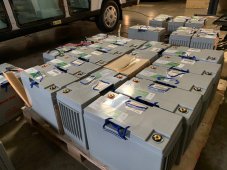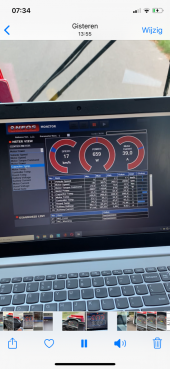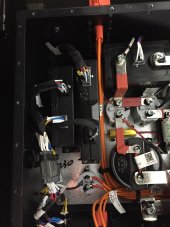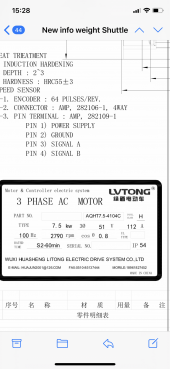Green Ranges
New Member
- Joined
- Oct 27, 2021
- Messages
- 6
Hi, I am Ken which runs a one man company rental and sales business with Leisure EV's like low speed shuttle busses.
I have always been fascinated with Strong , Light weight Power packs, due to the heavy weights , slow charging and thereby limited energy of the Lead Acid / Gel battery packs we use currently. That brings me to the story hereunder : ( Not sure if Its oke to talk right away about my project at the introduction , ... dont blame me if its not
We offer our customers two standard factory supplied batteries :
1.serial connected 12 x 6V - 200 ah@3hrs ( 6.5 volts if fully charged ) Gel batteries pack which has a range of 60 km if new in summer time temps. and like 40 km on flat tracks in winter temps, like -10 celcius.
2. serial connected 12 x 6V - 260 ah@3hrs ( 6.5 volts if fully charged ) Gel batteries with range like 80 km and like 50-60 in winter temps.
Controller into of our Shuttles : Toyota Controller ( 80 Volts - ( https://key-components.toyota-industries.com/products/controller/l_type/ ) Input DC power - Output AC power for Three fase E- Motor 7.5 kw AC.
Customers always ask what you cant deliver i think they have a nose for it ... heheh. If you able to give them 60 km range they ask for 80 if you tell them you able to give them 80 km range they ask to drive slopes ( which is a super drainer for EV ). Etc
That brings me to the point I got interested in the EVE Prismatic Cells serial connected and protected with an BMS.
Some things which give me questions :
* The EVE cells 280 / 304 ah are 3.2 volts . As you probably understand its important to have an voltage range which is suitable for my controller which is said to work at 80 Volts
- I need to know the know the fully charged EVE cell voltage ( seems to be 3.65 cut off charging voltage per cell ) and if 'rest' a while will drop to 3.5 volt and if have slight load on it they go to the solid 3.3 - 3.2 volts ( fully charged with load ) that brings me to the question : How many cells would be best for my solution and I dont exceed the max voltage of 80 volts of my controller. I was thinking about 23 cells x 3.35 Volts to be somewhere in the middle of top voltage 3.5 and lower 3.2 volt : 77.05 Volt. Means upper lever ( which is under the 80 Volts of the controller ) and the cutoff voltage of 2.5 volts x 23 cells : 57.50 Volt ( which is slight low for this system as 60 Volts as lower level would be more suitable to feed the controller.
* Then the Bms , I see some fan cooled Daly BMS which are around 200 usd , which is a low price, so not really sure how safe they are and how reliable. I know they have an Bluetooth to read the values, a possible screen connecter, which is nice. But I also see and read a thread here on the forum about an PV input to the Daly BMS ( comparable setup as mine ) which feeded the BMS an overvoltage which make the Daly BMS Short circuit and ruined the EVE cells.
- What do you guys advice ? as a reliable BMS, as persons are carried in these Shuttles I want to think out a safe system ( I know my factory can suit an pack but if a cell is broken, not balanced or whatever I need to discuss much ) so I would like so see the possibilties to build an safe pack and then discuss with them, besides how much fun is it to build one yourself ..
- The Overvoltage to the BMS ( if choose Daly ) could only be caused by a failing charger for my setup and now like the PV overvoltage example on the thread I read before. The BMS I attached cost like 600 USD and seems way more advanced with solid Shunt and Screen etc then the Daly version.
Looking forward for some of your advices and reactions and I keep your updated after I will order - build and test all.
Thanks Guys
Kenny
I have always been fascinated with Strong , Light weight Power packs, due to the heavy weights , slow charging and thereby limited energy of the Lead Acid / Gel battery packs we use currently. That brings me to the story hereunder : ( Not sure if Its oke to talk right away about my project at the introduction , ... dont blame me if its not
We offer our customers two standard factory supplied batteries :
1.serial connected 12 x 6V - 200 ah@3hrs ( 6.5 volts if fully charged ) Gel batteries pack which has a range of 60 km if new in summer time temps. and like 40 km on flat tracks in winter temps, like -10 celcius.
2. serial connected 12 x 6V - 260 ah@3hrs ( 6.5 volts if fully charged ) Gel batteries with range like 80 km and like 50-60 in winter temps.
Controller into of our Shuttles : Toyota Controller ( 80 Volts - ( https://key-components.toyota-industries.com/products/controller/l_type/ ) Input DC power - Output AC power for Three fase E- Motor 7.5 kw AC.
Customers always ask what you cant deliver i think they have a nose for it ... heheh. If you able to give them 60 km range they ask for 80 if you tell them you able to give them 80 km range they ask to drive slopes ( which is a super drainer for EV ). Etc
That brings me to the point I got interested in the EVE Prismatic Cells serial connected and protected with an BMS.
Some things which give me questions :
* The EVE cells 280 / 304 ah are 3.2 volts . As you probably understand its important to have an voltage range which is suitable for my controller which is said to work at 80 Volts
- I need to know the know the fully charged EVE cell voltage ( seems to be 3.65 cut off charging voltage per cell ) and if 'rest' a while will drop to 3.5 volt and if have slight load on it they go to the solid 3.3 - 3.2 volts ( fully charged with load ) that brings me to the question : How many cells would be best for my solution and I dont exceed the max voltage of 80 volts of my controller. I was thinking about 23 cells x 3.35 Volts to be somewhere in the middle of top voltage 3.5 and lower 3.2 volt : 77.05 Volt. Means upper lever ( which is under the 80 Volts of the controller ) and the cutoff voltage of 2.5 volts x 23 cells : 57.50 Volt ( which is slight low for this system as 60 Volts as lower level would be more suitable to feed the controller.
* Then the Bms , I see some fan cooled Daly BMS which are around 200 usd , which is a low price, so not really sure how safe they are and how reliable. I know they have an Bluetooth to read the values, a possible screen connecter, which is nice. But I also see and read a thread here on the forum about an PV input to the Daly BMS ( comparable setup as mine ) which feeded the BMS an overvoltage which make the Daly BMS Short circuit and ruined the EVE cells.
- What do you guys advice ? as a reliable BMS, as persons are carried in these Shuttles I want to think out a safe system ( I know my factory can suit an pack but if a cell is broken, not balanced or whatever I need to discuss much ) so I would like so see the possibilties to build an safe pack and then discuss with them, besides how much fun is it to build one yourself ..
- The Overvoltage to the BMS ( if choose Daly ) could only be caused by a failing charger for my setup and now like the PV overvoltage example on the thread I read before. The BMS I attached cost like 600 USD and seems way more advanced with solid Shunt and Screen etc then the Daly version.
Looking forward for some of your advices and reactions and I keep your updated after I will order - build and test all.
Thanks Guys
Kenny
Attachments
-
 IMG_8691.JPG435.4 KB · Views: 2
IMG_8691.JPG435.4 KB · Views: 2 -
LiFePo4 BMS Specification by Deligreen.pdf1.3 MB · Views: 2
-
Deligreen SMART BMS Catalogue.pdf9.3 MB · Views: 1
-
LF280N(3 2V 280Ah)Product Specification 2019 12 22(1).pdf727.3 KB · Views: 1
-
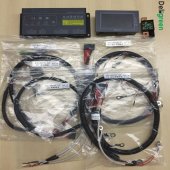 HTB1mst7hHZnBKNjSZFGq6zt3FXaw.jpg182.1 KB · Views: 2
HTB1mst7hHZnBKNjSZFGq6zt3FXaw.jpg182.1 KB · Views: 2 -
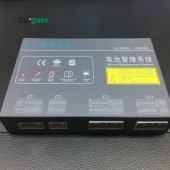 HTB19JiohRjTBKNjSZFuq6z0HFXaB.jpg785.6 KB · Views: 2
HTB19JiohRjTBKNjSZFuq6z0HFXaB.jpg785.6 KB · Views: 2 -
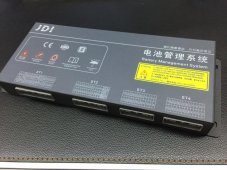 HTB1Gx99jsUrBKNjSZPxq6x00pXaf.jpg123.3 KB · Views: 2
HTB1Gx99jsUrBKNjSZPxq6x00pXaf.jpg123.3 KB · Views: 2




